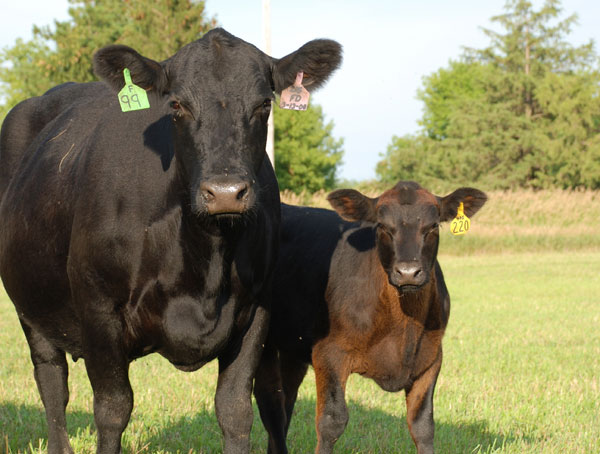Testing your way to the top
It took a market shock like 2014, but a Colorado rancher made major changes to his operation with DNA testing.
May 17, 2018

By Miranda Reiman
Just like many things in society today, it seems cow-calf producers are separating themselves into two distinct camps. And unfortunately, the philosophical divide doesn’t leave room for much middle ground.
Or does it?
“On one hand, we have the high-octane, high-input, high-production, high-return operations that are geared to go big,” says Ryan Noble, of Yuma, Colo. “Put on the gas. You get what you pay for.”
The opposite of that?
“The cow does all the work, minimum inputs, moderate return, maybe not so stellar performance in the feedlot or on the rail.”
But for Noble, the fourth-generation cattleman refuses to fit neatly into one of those boxes. During the past four years, he’s used genomic technology to make sure the cows that thrive on his resources can also deliver the total package after leaving the ranch.
“We can, in fact, as an industry, run cows that are moderate, efficient, low overhead, low-input cattle,” he says. “At the same time, you can have the genetic potential to go to the feedyard. Gain the big pounds efficiently and produce a discount-free carcass that will net you real dollars.
“But most important, bring a memorable eating experience to the most important person in the production chain: the consumer,” Noble says.
It took a year like 2014 to inspire a strategy to get there.
“The market was just sky high,” he says. Steer calves were worth upwards of $1,500, so he decided to look at retaining heifers.
“We were signing up for $2,475 of expenses before we sold her first calf. We had never in our lives invested that much money in commercial cows,” Noble says. “I knew right then and there, we needed to find a tool to be sure we were keeping the best ones.”
He turned to genomic testing.
That first year, the rancher culled about 17% of the heifers they’d already visually sorted for possible replacements. In the fourth year of testing, that number was down to 2%.
“Almost every heifer calf we raise now out of these cows has breeding potential,” he says. “Historically, the cheapest commodity we can produce on our ranch is a non-breeding heifer calf. The most profitable commodity we sell from our ranch is bred heifers or bred cows. This is a financial breakthrough for my business.”
Armed with new information, Noble worked with his seedstock supplier to find bulls that built on his herd’s strengths but added carcass weight and carcass quality.
“Lucky for us, marbling is highly heritable,” he says. “It’s easy to fix, but you cannot fix what you don’t measure.” And you don’t want to measure it for the first time in the packing plant, he says.
“It’s an expensive place to find out that you could possibly be raising low-margin cattle,” Noble says. After a few rounds of genomic tests and making adjustments based on results, he retained ownership of his first set of heifers this past year. They gained 5.2 pounds per day and 60% earned a Certified Angus Beef (CAB) brand premium.
“What I’m most proud of is…we had no discounts for Select,” he says.
The leap in quality was more apparent because he worked on it from all angles. “You can improve with bulls, but it’s a lot faster if you’re working at it on the bull side and the cow side,” Noble says.
The rancher admits he was skeptical of the $28 per head cost at first. Then he ran the math. Noble says if he can reduce cow cost by “a dime a day,” then he’s made that back in 280 days. If he could stack that with an increase in production of 10 cents per day, it would pay for itself in about five months.
“We’ve identified the elite cattle out of this program,” he says.
Miranda Reiman is director, producer communications with Certified Angus Beef LLC
You May Also Like



